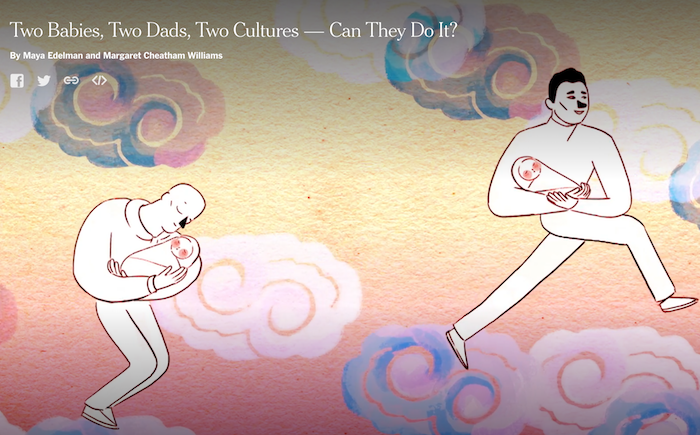
“Binge-watch” and “The New York Times” might not immediately seem to go together. But this week the paper launched the second season of Conception, an animated video series aimed at parents, and binge-watching a few episodes is in fact exactly what the team hopes you’ll do.
Each of the six episodes of the second season of Conception is about four minutes long and focuses on the trickiness of parenting in 2018: “What is it like to parent in the context of major cultural, social and political shifts, such as #MeToo, the immigration discussion, the opioid crisis and the gun debate? How do we raise children in a world that already sees them — and you — in a certain way?” The format of each episode is the same: One parent’s story, in their own words and voice, told over animation. Here, for instance, is “Why I Won’t Teach My Son ‘Black Codes.'”
The audio for each episode is distilled from a long (between 90 minutes and three hours) in-person interview conducted by Times visual journalist and editor Margaret Cheatham Williams, who came up with the idea for the series in the first place.
“We’re a subscription business, so we’ve been looking a lot at binge-watching and creating a body of work that, when people find one, they will spend time with multiple episodes,” said Nancy Donaldson Gauss, the Times’ executive director of video. In the first season of Conception, 10 percent of viewers watched three or more episodes in one session. Releasing episodes in batches, as curated playlists, was key for enabling that behavior.
The big social and video platforms are a part of the Times’ promotion of the series, but only a part, said Francesca Barber, director of audience growth and programming for video. For instance, the Times will also post some of the episodes as Instagram Stories, and it will post clips to Twitter. It will also release one episode per week, for six weeks, to YouTube. But the main goal is to keep readers on the Times’ site — so Conception will be promoted across multiple Times newsletters and on article pages.
“The fact that we are able to create this binge-watching behavior on our platform is really unique and exciting for us,” said Barber. “That’s something that we’re continuing to look at.”